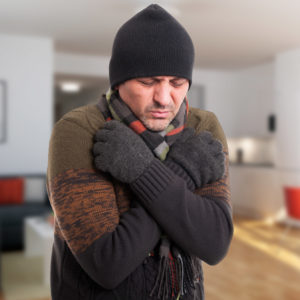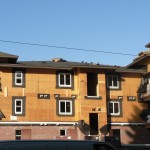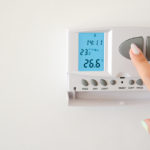 When your HVAC customers have a complaint about drafts, heat loss, or poor air quality, they need you to identify and fix the problem quickly. And as any technician knows, diagnostics are a complicated matter. Even the most basic homes have multiple potential sources of heat loss. Vents, wall caps, ducts, and other equipment are only some of the things a thorough technician should test. Any part of a house can lose heat, which means the whole home needs to be assessed.
When your HVAC customers have a complaint about drafts, heat loss, or poor air quality, they need you to identify and fix the problem quickly. And as any technician knows, diagnostics are a complicated matter. Even the most basic homes have multiple potential sources of heat loss. Vents, wall caps, ducts, and other equipment are only some of the things a thorough technician should test. Any part of a house can lose heat, which means the whole home needs to be assessed.
To do that, you need the right kind of tools. One tool that can save you and your customers’ time and money in diagnostics is a thermal imager. Thermal imaging only used to be carried out at large facilities by dedicated thermographers. Today, handheld thermal imaging devices are becoming common in residential HVAC. They are great diagnostic tools that improve customer service as well.
Thermal imaging for diagnostics and inspection
A thermal imager is a camera that measures the infrared energy emitted from surfaces. It doesn’t measure air temperature; it detects the impact that air temperature has on surfaces. A thermal imager can be used to examine heat loss in your customers home by looking at surfaces like walls, ceilings, and floors. It can also be used to identify problems with the furnace or boiler.
Thermal imaging will detect any number of issues within the home. It will tell your customers if they are losing heat through faulty seals in doors and around windows. And it provides a clear picture of whether the HVAC system is functioning as it should.
For finding air leaks a thermal imager works best in conjunction with a blower door. The testing should also be done when there is a significant temperature difference between the outside and the inside. Testing in spring or fall, when the outside temperatures are moderate will not be as effective.
When you install a rooftop HVAC unit, you can use a thermal imager to inspect the roof membrane around the unit to ensure that it hasn’t been punctured or otherwise compromised. Be sure to keep images of properly functioning buildings on hand for comparison.
Thermal imagers are ideal for inspecting HVAC equipment for problems such as wiring issues. For example, often when a motor isn’t working correctly, the housing will be warmer than normal.
Thermal imaging for customer service
As a customer service tool, a thermal imager can’t be beat. As you explain issues to your customer, you can show them images that back up your statement. For example, if your customer is not getting the value they expect from their new furnace because their home is poorly insulated, you can show them where there is heat loss through their walls.
You can also use thermal imaging to document the resolution of an issue. Show your customer the image that identifies the problem, such as heat loss in a particular room. After you have resolved the problem, provide them with an image proving the room is no longer losing heat.
North American homeowners are encouraged to get independent energy audits, which can cost them anywhere from $250 to $700. Thermal imaging is a large part of any energy audit. By adding a basic energy audit to your service calls, you can save them money and earn their loyalty at the same time.
Before you start using thermal imaging…
Familiarize yourself with the emissivity (the ratio of energy emitted) of common surfaces so that you can understand the images. A thermal imager will come with emissivity information, but you’ll have to experiment with different surfaces with your imager to get accustomed to how it functions.
It’s a good idea to get some training before you start using an imager in your customer’s homes. Many manufacturers offer free training online, and there are certification courses you can take as well.



